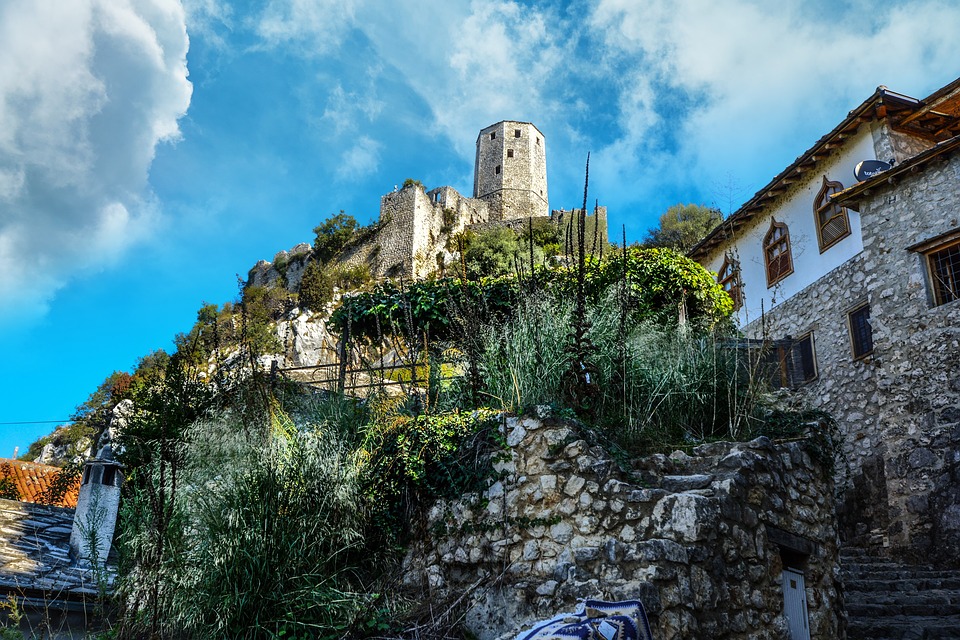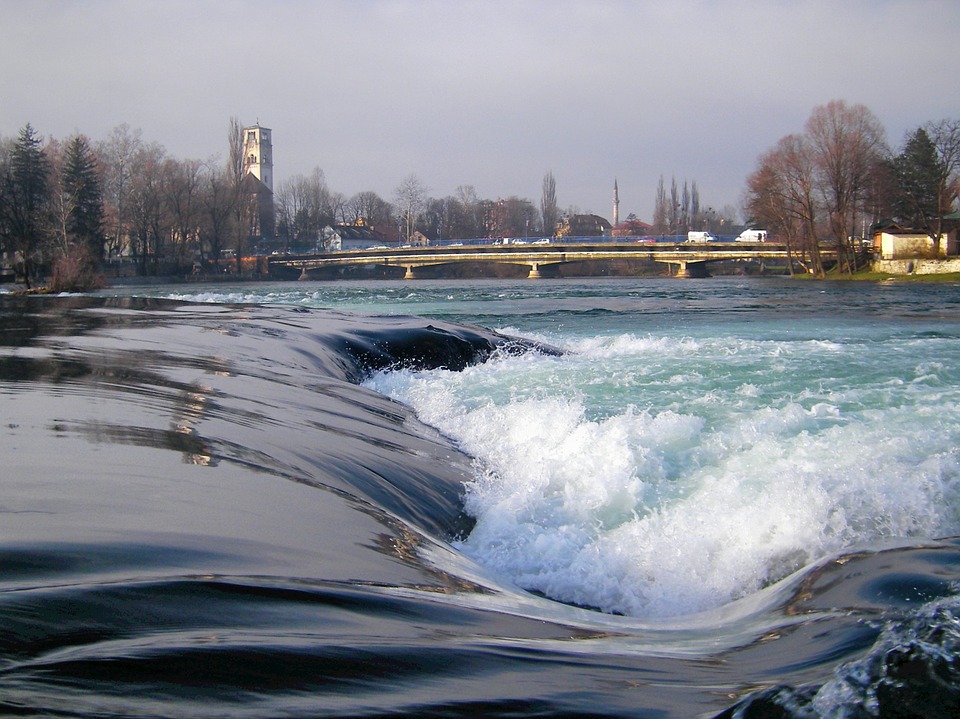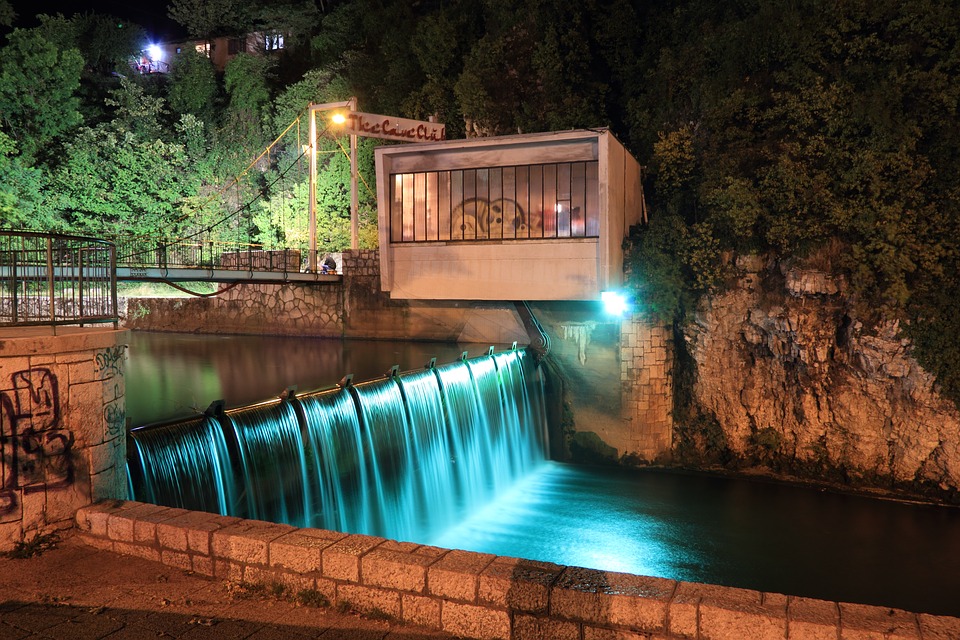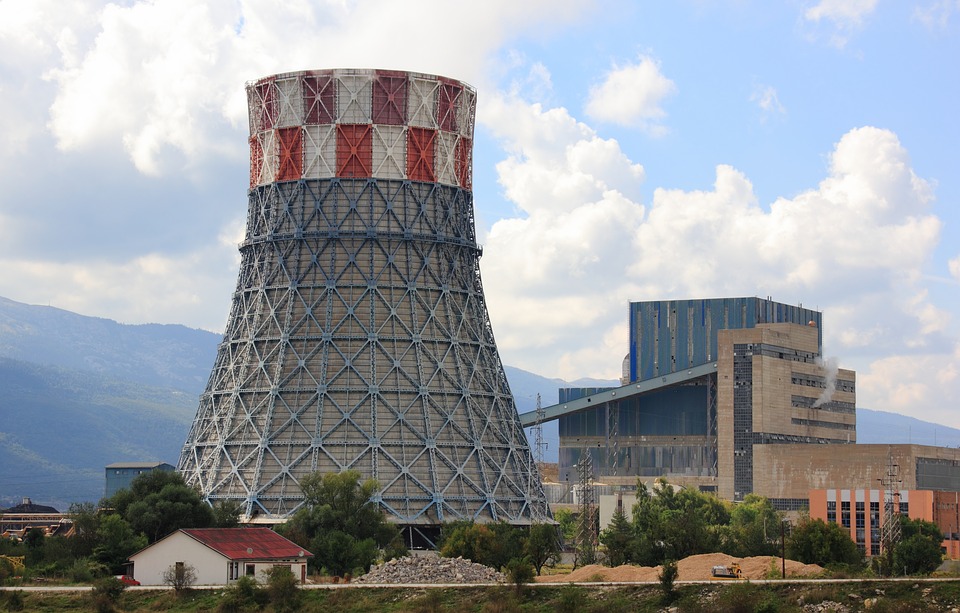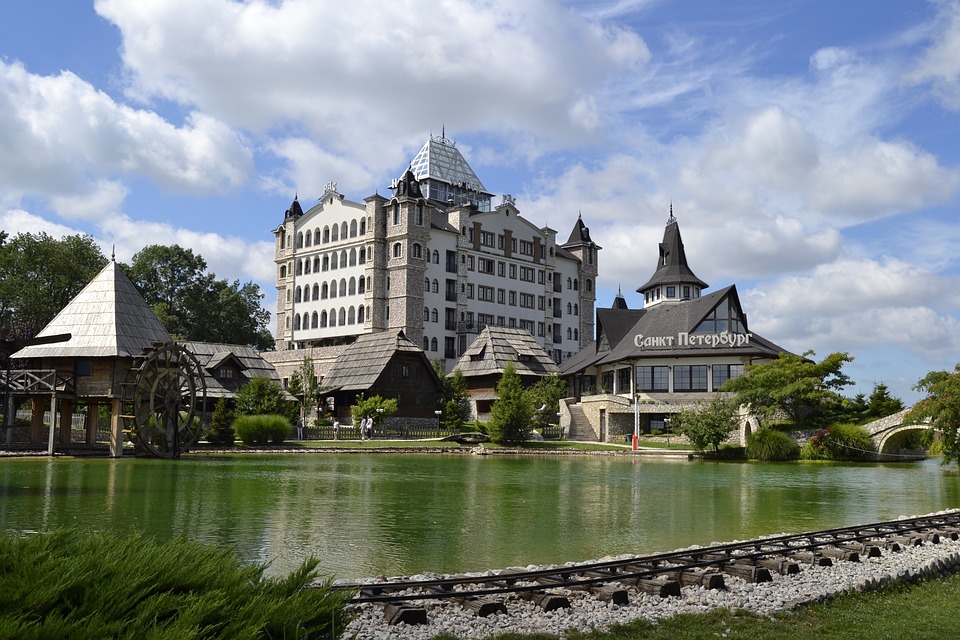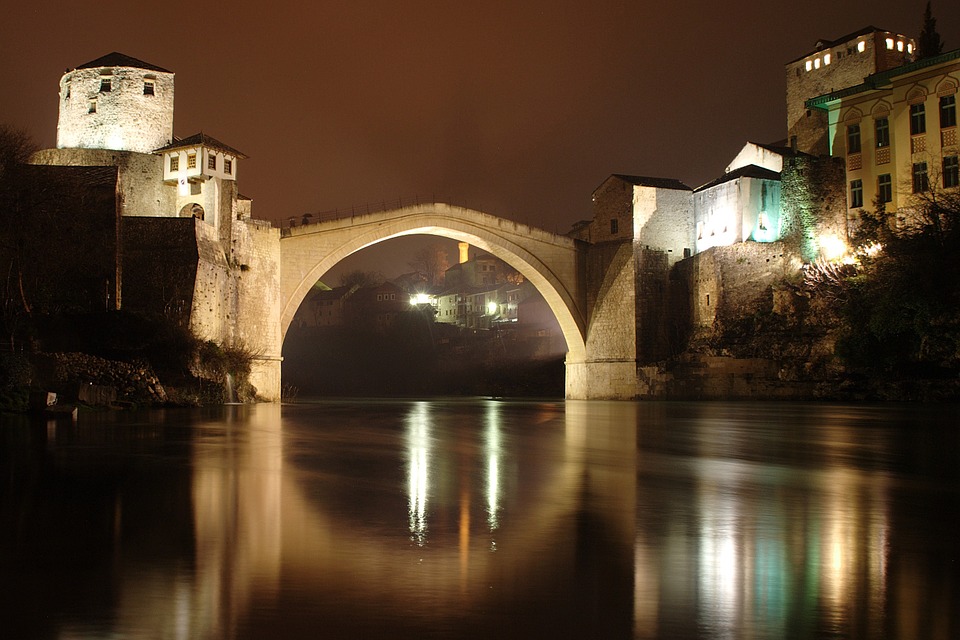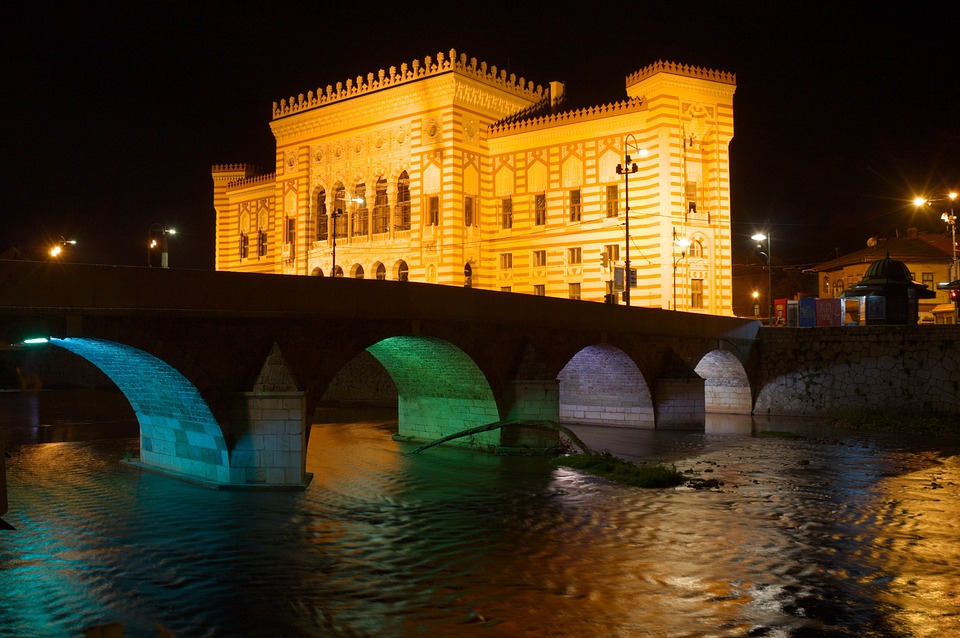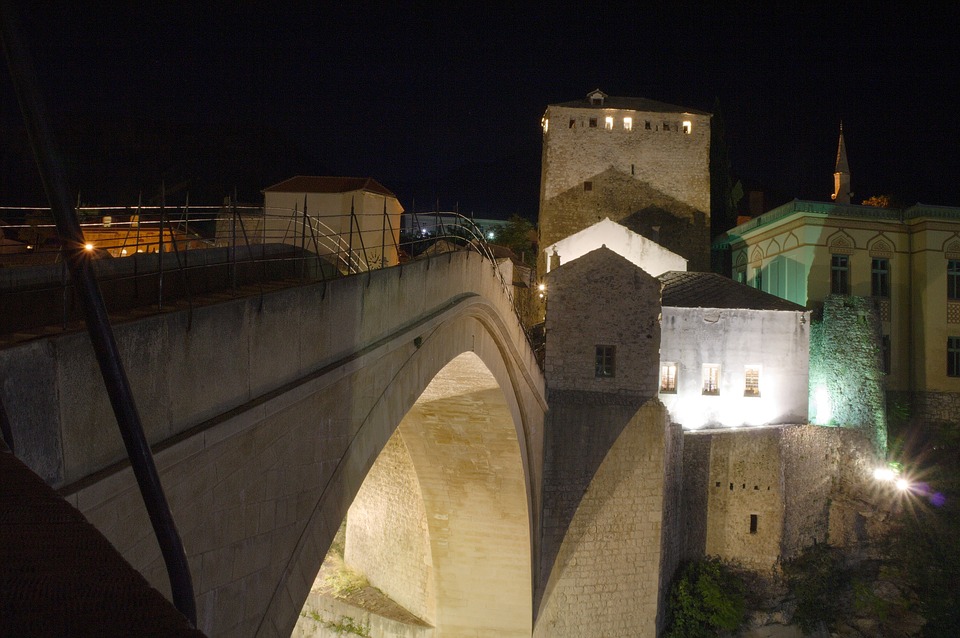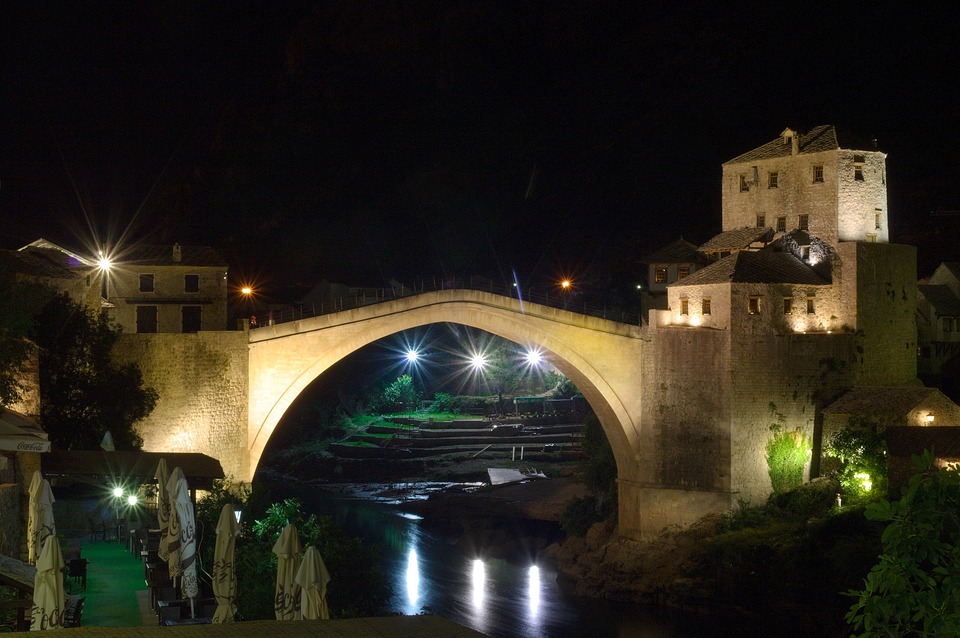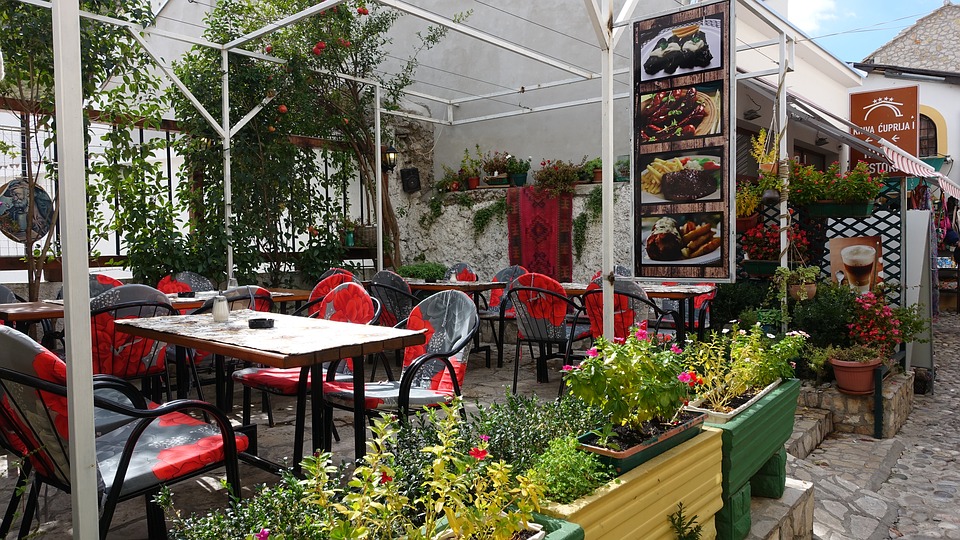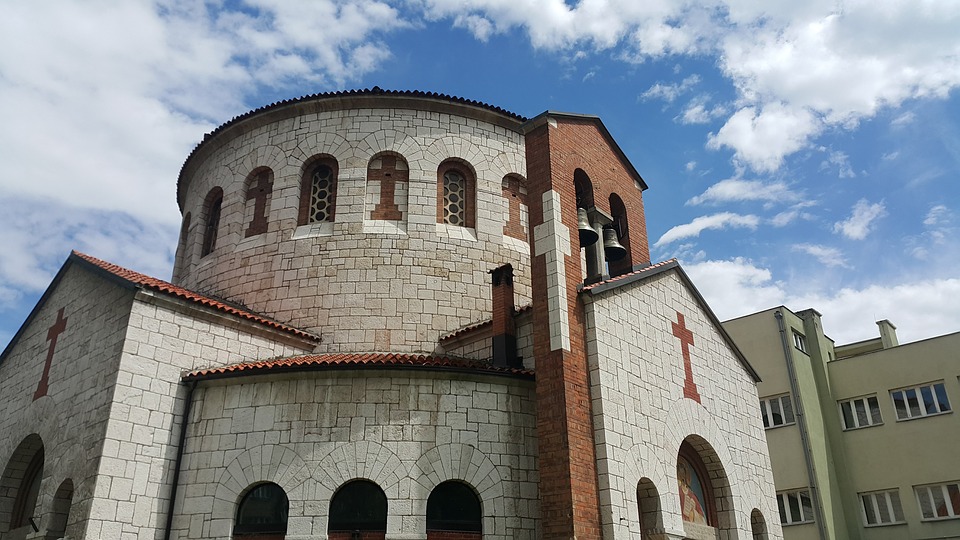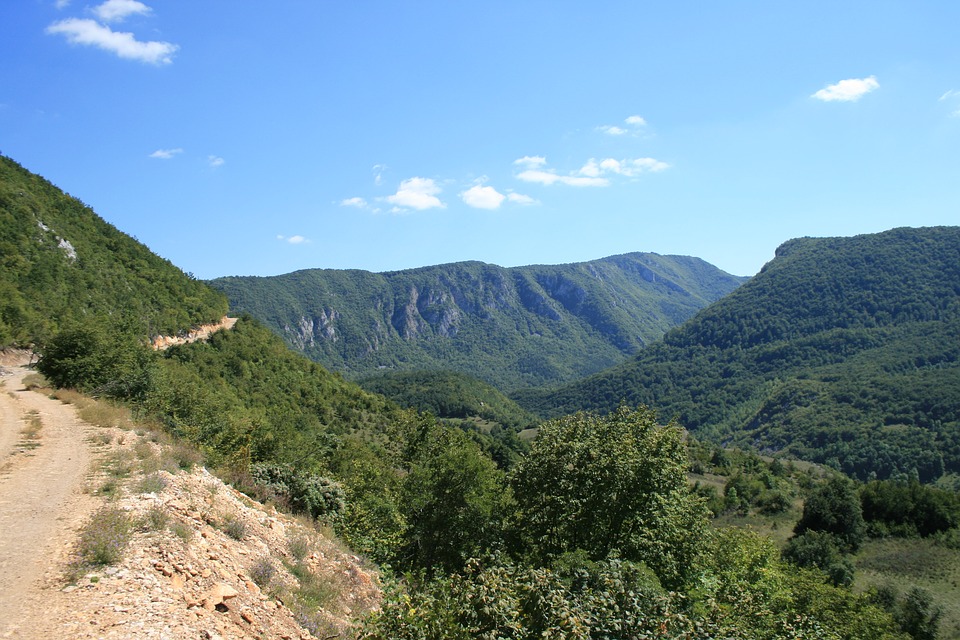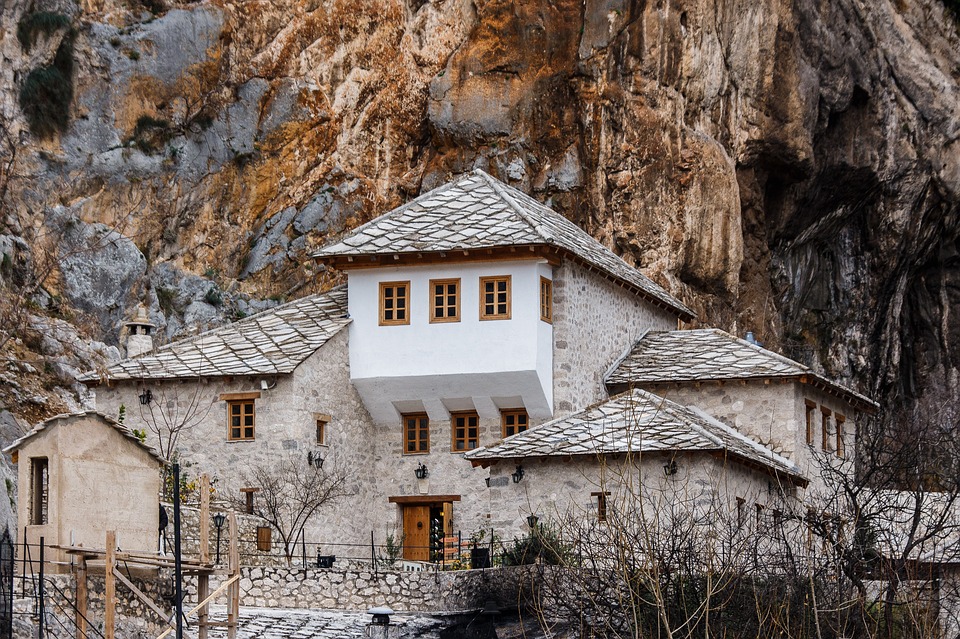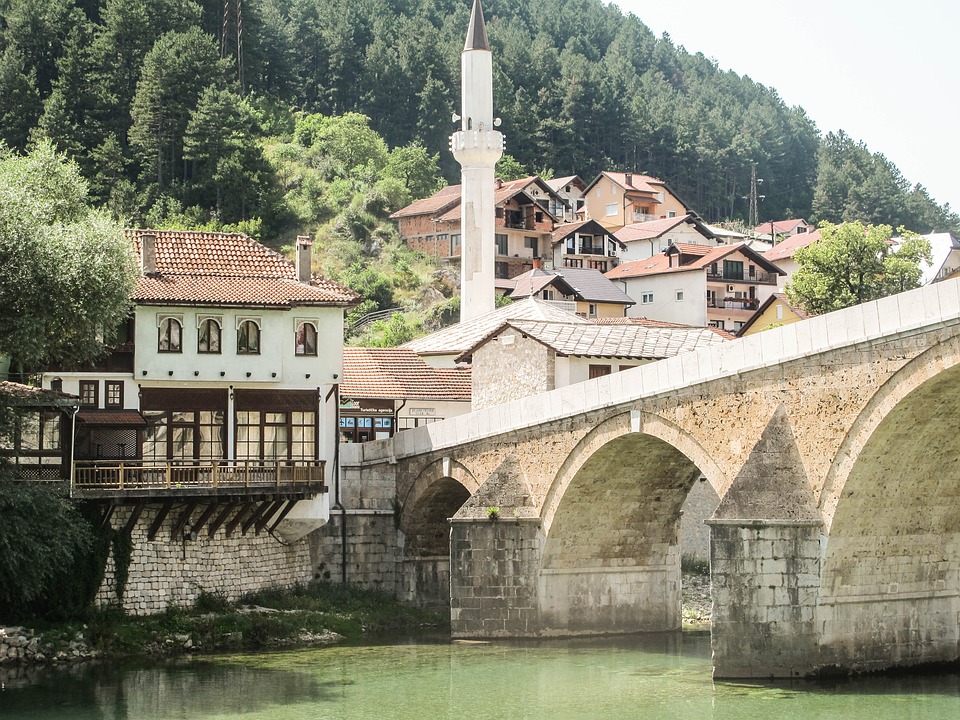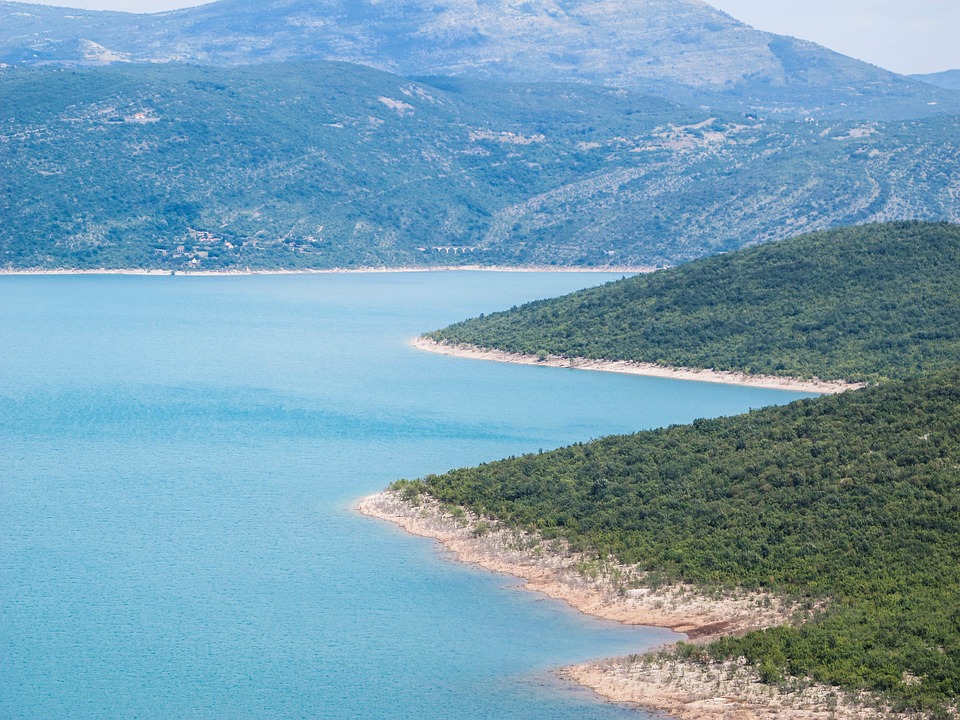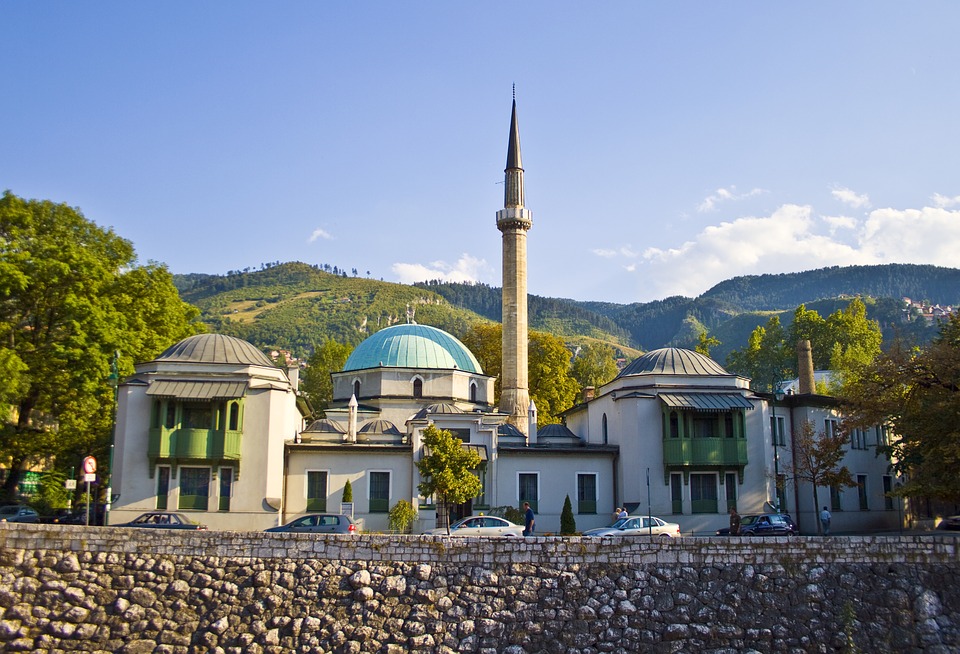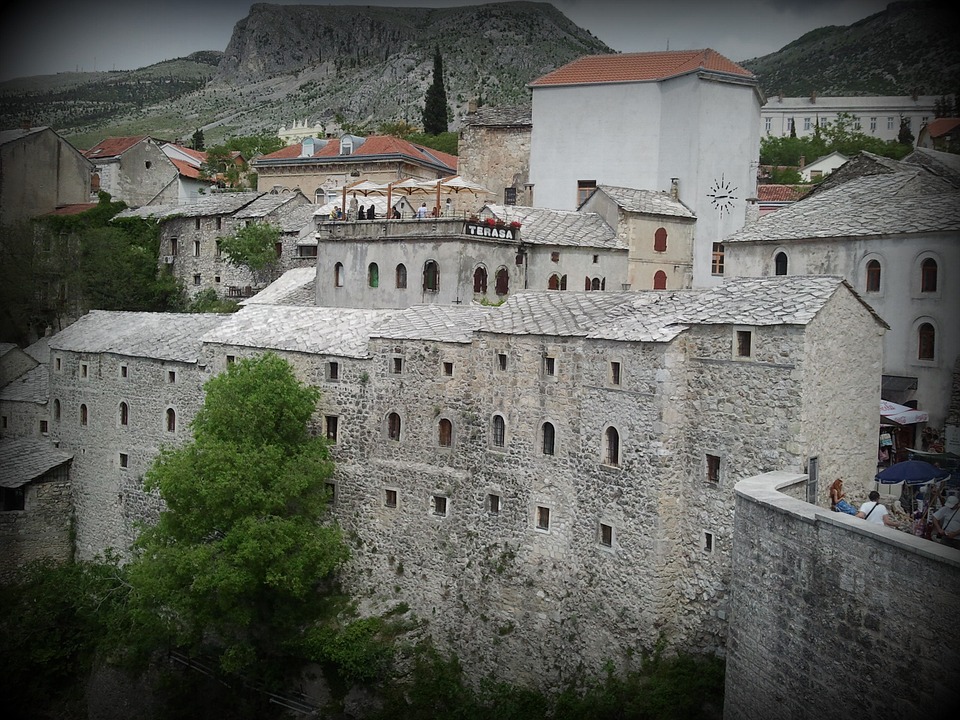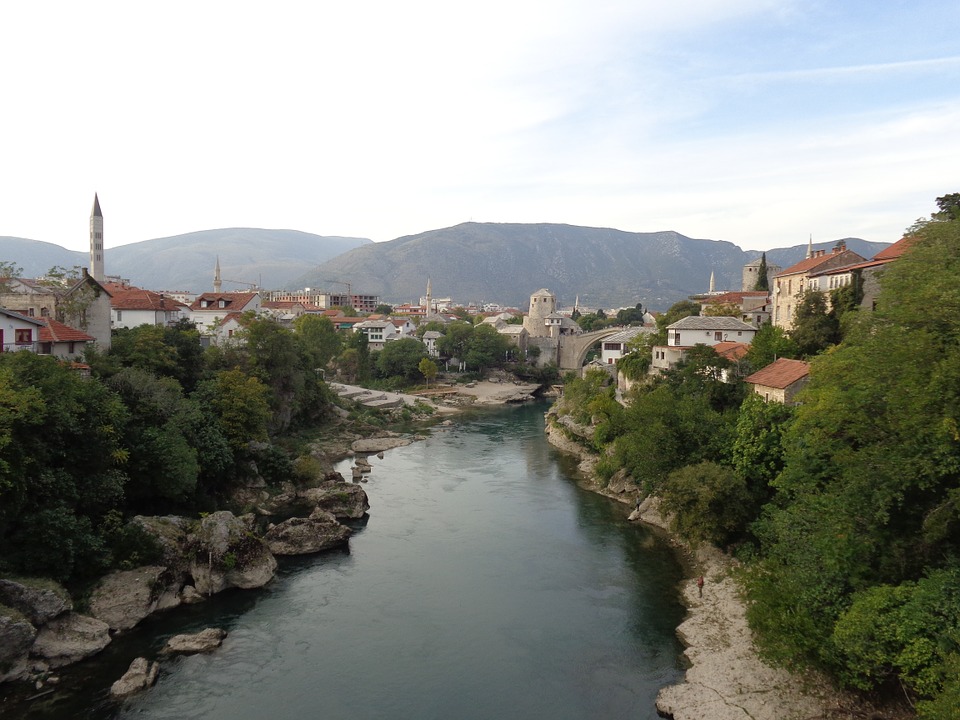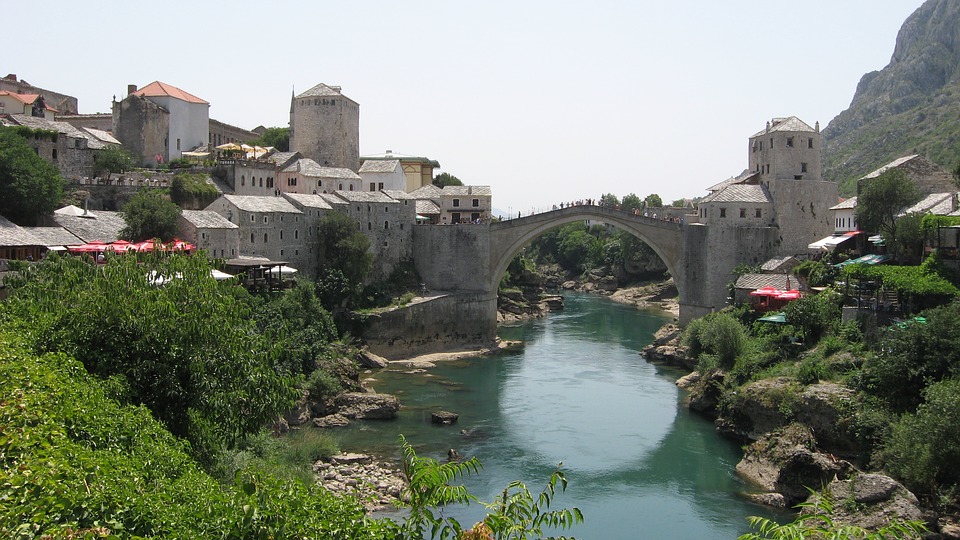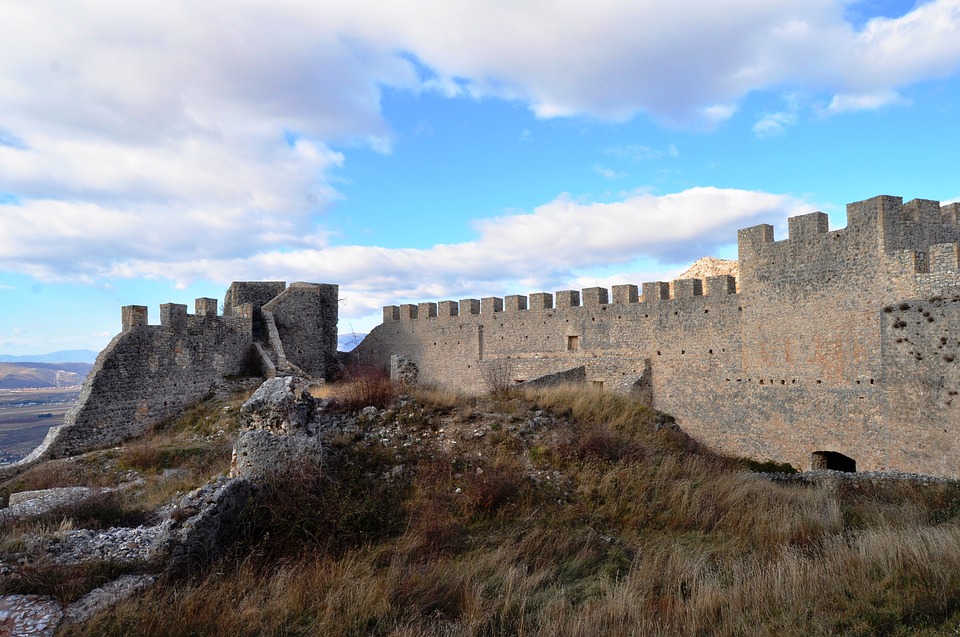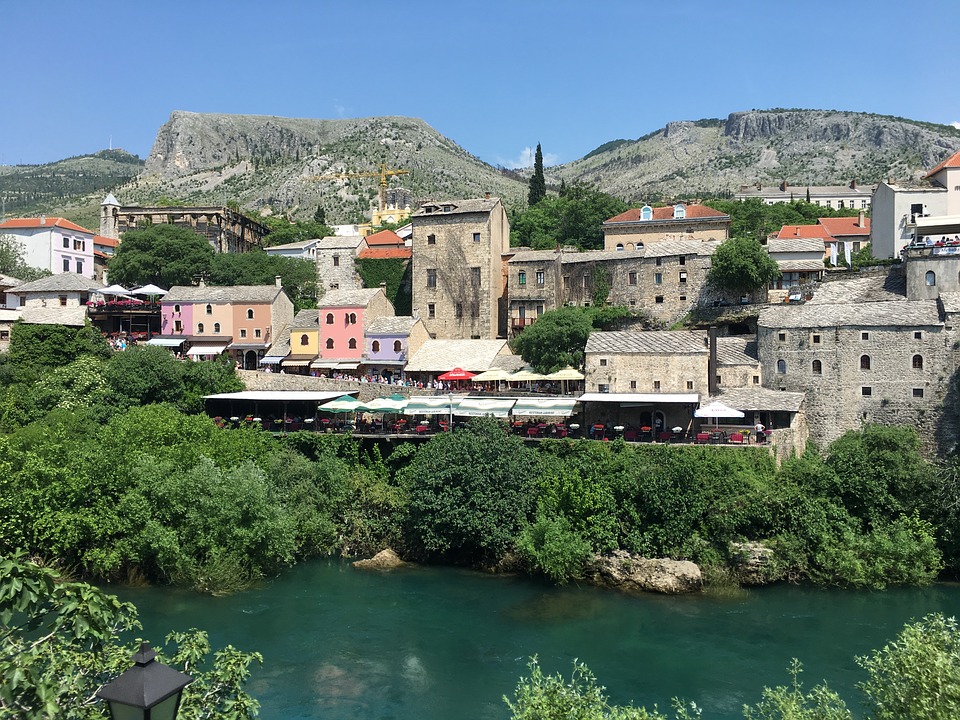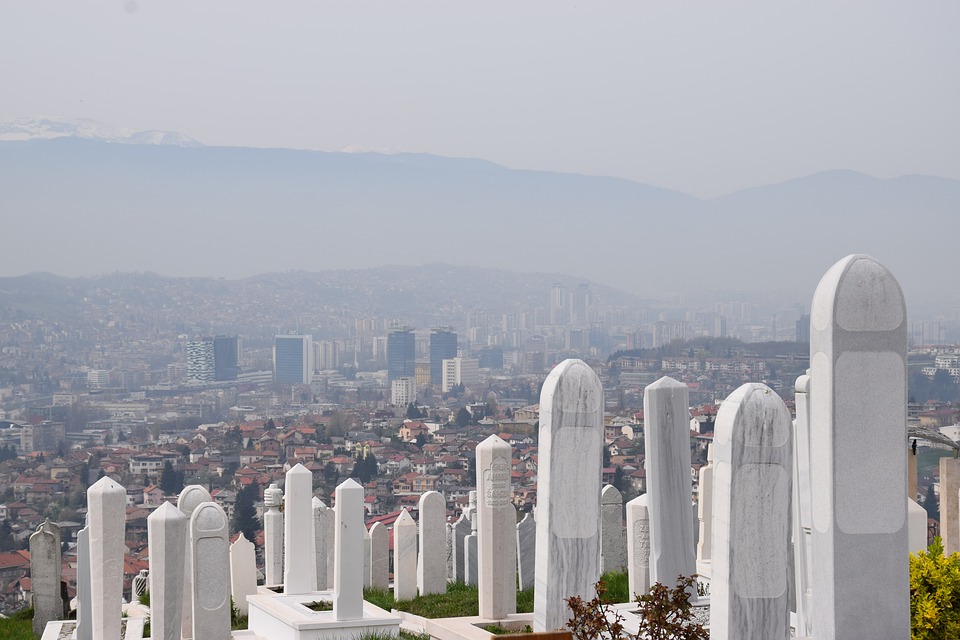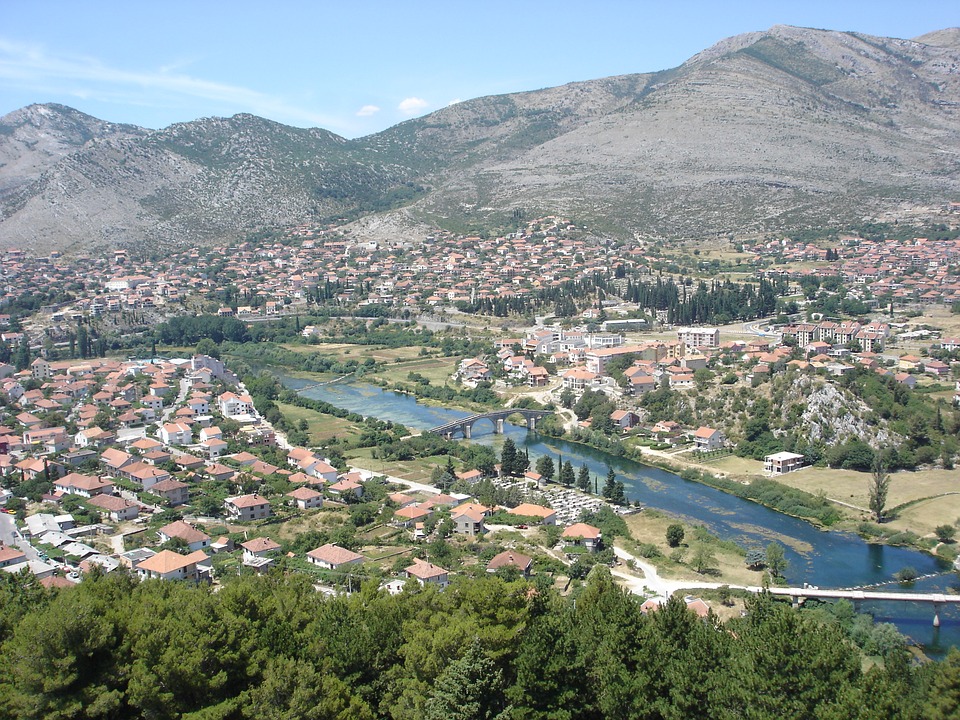Bosnia and Herzegovina
(Bosna i Hercegovina (Bosnia and Herzegovina))

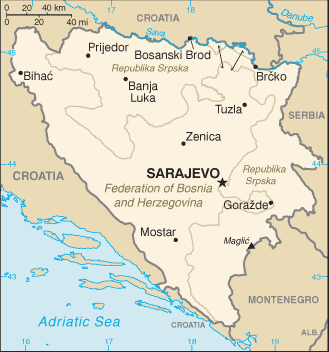
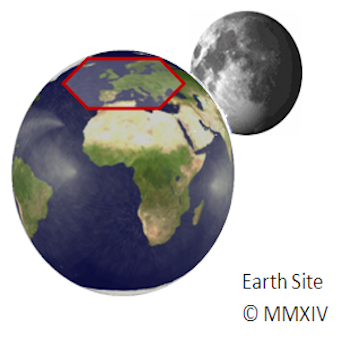
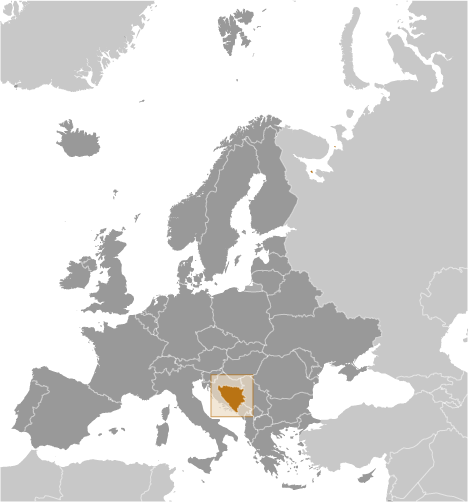
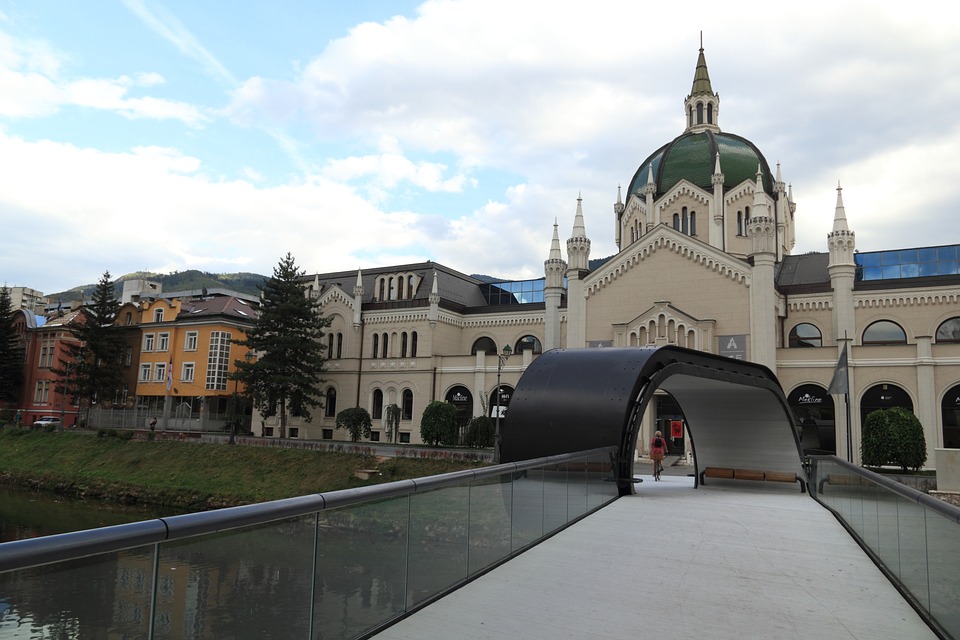
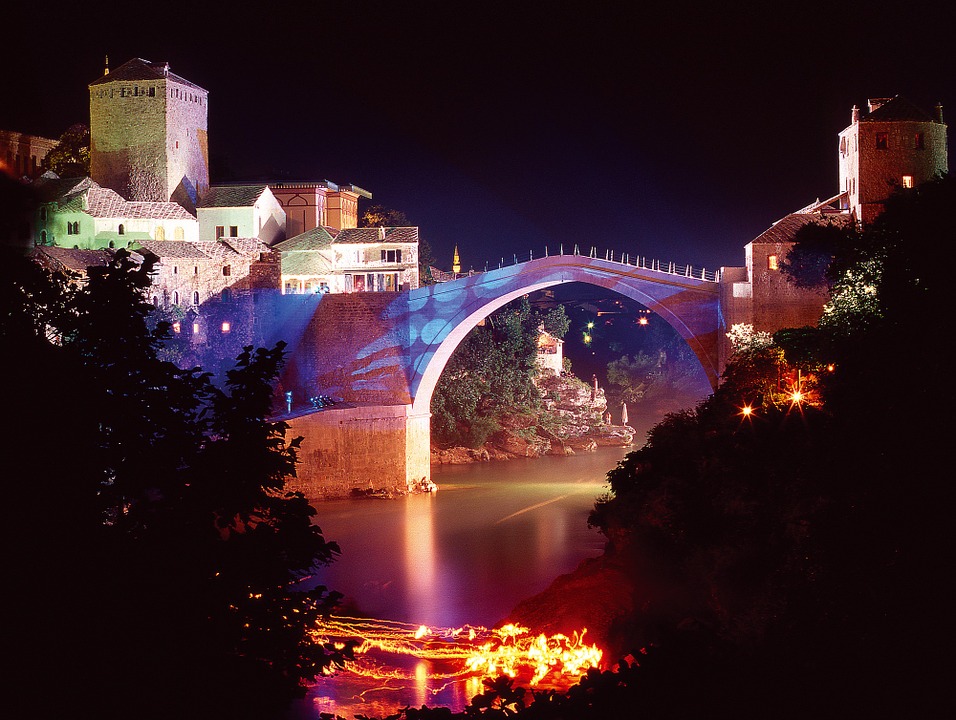

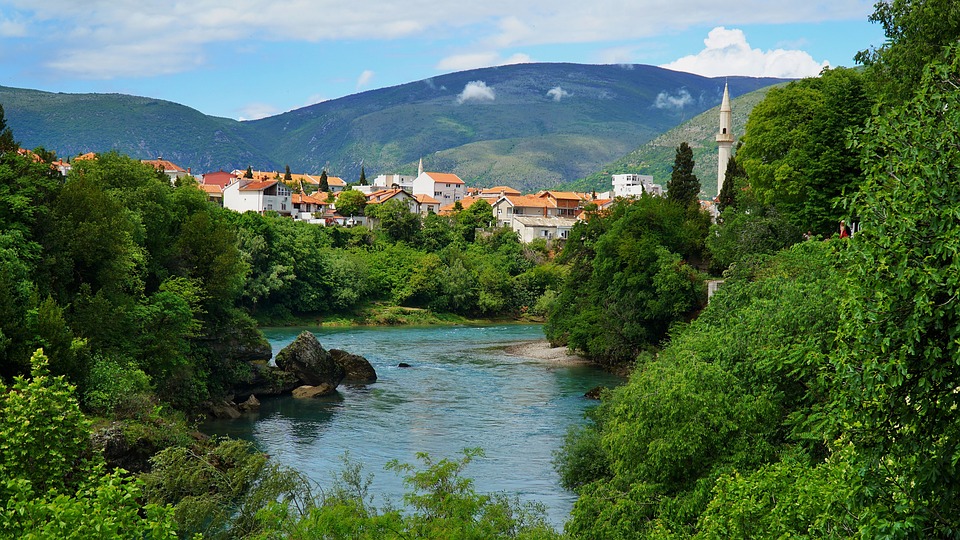
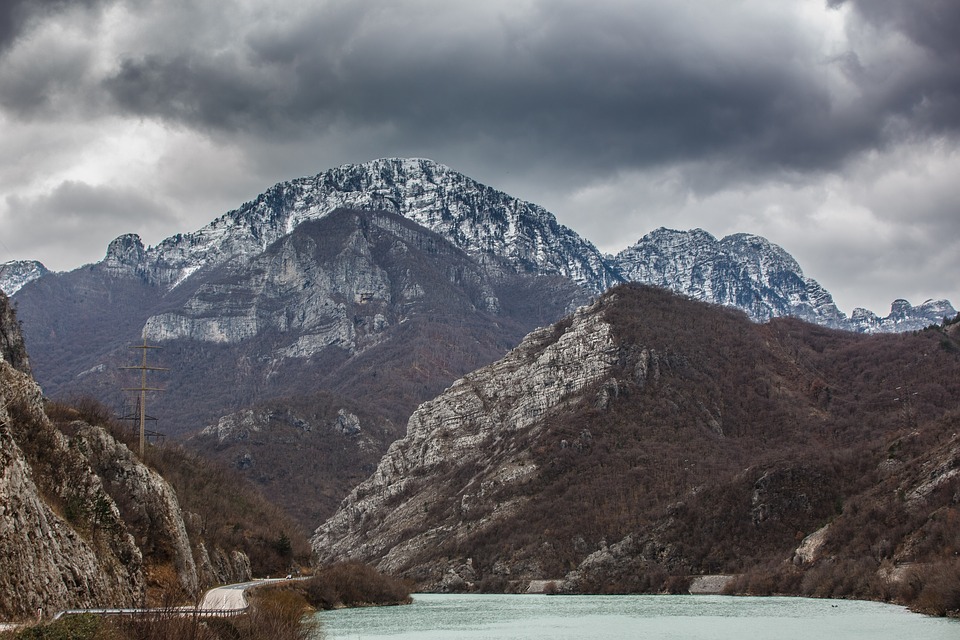
Capital of Bosnia and Herzegovina : Sarajevo
Population (Estimated July 2012): 4,622,292
Area: 51,209 km2 or 19,772 mi2
Currency: Convertible Marka (KM)
Official Language: Bosnian, Croation and Serbian
Political Information: Federal Democratic Republic
Official Religion: No Official Religion (approximately 40% of the population are Muslim, 31% are Orthodox, 15% are Roman Catholic and 14% have other religious beliefs)
Highest Mountain: Mount Maglic at 2,386m or 7,828ft
GDP Official Exchange Rate (OER is more precise at gauging a countries economic power)
(Estimated 2011): $18.3 billion (US$) or £10.98 billion (GBP)
GDP (OER) Per Capita (per member of the population estimated 2011): (US$) or (GBP)
GDP Purchasing Power Parity (PPP is good for gauging living conditions and use of resources but not as accurate as OER. This data has been calculated based on the sum value of all goods and services produced in the country valued at prices prevailing in the United States)
(Estimated 2011): $31.72 billion (US$) or £19.032 billion (GBP)
GDP (PPP) Per Capita (per member of the population estimated 2011): $8,200 (US$) or £4,920 (GBP)
Time Zone: + 1:00
Counties/Provinces/States: 2 first-order administrative divisions and 1 internationally supervised district* – Brcko district (Brcko Distrikt)*, the Bosniak/Croat Federation of Bosnia and Herzegovina (Federacija Bosna i Hercegovina) and the Bosnian Serb-led Republika Srpska; note – Brcko district is in northeastern Bosnia and is a self-governing administrative unit under the sovereignty of Bosnia and Herzegovina and formally held in condominium between the two entities; the District remains under international supervision.
Leaders: High Representative is Valentin Inzko and Vjekoslav Bevanda as Prime Minister.
Sources: CIA World Fact Book, Encyclopaedia Britannica.
Bosnia and Herzegovina, often referred to as simply Bosnia is a country located in Southeastern Europe on the Balkan Peninsula. It is bordered by Croatia to the north, west, and south, Serbia to the east, and Montenegro to the southeast. The country has a rich and complex history, with influences from various empires and cultures throughout the centuries. Understanding Bosnia and Herzegovina is important not only for its historical significance but also for its current political, economic, and social situation.
Historical Overview of Bosnia and Herzegovina
The region that is now Bosnia and Herzegovina has a long and diverse history. It was inhabited by various tribes and civilizations dating back to prehistoric times. In the medieval period, Bosnia was an independent kingdom ruled by the Bosnian Banate. However, in the 15th century, the Ottoman Empire conquered the region and ruled it for nearly four centuries.
In the late 19th century, Bosnia and Herzegovina came under Austro-Hungarian rule after the Congress of Berlin. This period saw significant modernization and development in the region. However, tensions between different ethnic groups began to rise, leading to the assassination of Archduke Franz Ferdinand in Sarajevo in 1914, which triggered World War
After World War I, Bosnia and Herzegovina became part of the Kingdom of Serbs, Croats, and Slovenes, which later became Yugoslavia. The country experienced relative stability under communist rule during the Yugoslav era. However, with the collapse of communism in the early 1990s, ethnic tensions resurfaced, leading to a series of conflicts known as the Yugoslav Wars. Bosnia and Herzegovina declared independence in 1992, leading to a devastating war that lasted until 1995.
Geography and Climate of Bosnia and Herzegovina
Bosnia and Herzegovina is located in the western Balkans and is characterized by its diverse geography. The country is mountainous, with the Dinaric Alps running through the western and southern parts of the country. The highest peak, Maglić, reaches a height of 2,386 meters (7,828 feet). The country is also home to several rivers, including the Bosna, Drina, and Neretva.
The natural resources of Bosnia and Herzegovina include coal, iron ore, bauxite, and timber. These resources have played a significant role in the country’s economy throughout history. However, the exploitation of these resources has also led to environmental challenges, such as deforestation and pollution.
Bosnia and Herzegovina has a moderate continental climate with hot summers and cold winters. The climate varies depending on the region, with the coastal areas experiencing a Mediterranean climate and the mountainous regions having a more alpine climate. The country receives a significant amount of rainfall throughout the year, with higher precipitation in the mountainous areas.
Demographics and Culture of Bosnia and Herzegovina
Bosnia and Herzegovina is a diverse country with a population of approximately 3.5 million people. The three main ethnic groups are Bosniaks (Bosnian Muslims), Croats, and Serbs. Bosnian is the official language of the country, but Serbian and Croatian are also widely spoken.
Religious diversity is another important aspect of Bosnian culture. The majority of Bosniaks are Muslim, while Croats are predominantly Catholic and Serbs are mostly Orthodox Christians. This religious diversity has played a significant role in shaping the country’s history and identity.
Bosnia and Herzegovina has a rich cultural heritage with influences from various civilizations throughout history. Traditional customs and celebrations are an important part of Bosnian culture. These include folk dances, music, and traditional clothing. Bosnian cuisine is also diverse and reflects the country’s Ottoman, Austro-Hungarian, and Mediterranean influences.
Political System of Bosnia and Herzegovina
Bosnia and Herzegovina has a complex political system that was established after the end of the Yugoslav Wars. The country is a federal republic with a decentralized government structure. It consists of two entities: the Federation of Bosnia and Herzegovina, which is predominantly Bosniak and Croat, and the Republika Srpska, which is predominantly Serb.
The political system is based on power-sharing between the three main ethnic groups. The presidency of Bosnia and Herzegovina consists of three members, one Bosniak, one Croat, and one Serb, who rotate every eight months. The parliament is divided into two houses: the House of Representatives and the House of Peoples.
Political parties play a significant role in the country’s political landscape. There are several major parties representing different ethnic groups, as well as smaller parties advocating for various issues. Elections are held regularly at all levels of government, but the political system has been criticized for its inefficiency and corruption.
Economy of Bosnia and Herzegovina
The economy of Bosnia and Herzegovina is still recovering from the effects of the Yugoslav Wars. The country has made progress in recent years, but it still faces significant challenges in terms of economic development and stability.
The major industries in Bosnia and Herzegovina include mining, manufacturing, agriculture, and tourism. The country has significant reserves of coal, iron ore, and other minerals, which contribute to its mining industry. Manufacturing sectors such as automotive, metal processing, and textiles are also important contributors to the economy.
Foreign investment has played a crucial role in Bosnia and Herzegovina’s economic growth. The country has attracted investments from various sectors, including energy, infrastructure, and tourism. However, the economy is still heavily reliant on remittances from Bosnians living abroad.
Unemployment and poverty rates are significant challenges in Bosnia and Herzegovina. The country has one of the highest unemployment rates in Europe, particularly among young people. Poverty and income inequality are also prevalent, with many people living below the poverty line.
Education and Healthcare in Bosnia and Herzegovina
Education is a fundamental right in Bosnia and Herzegovina, and the country has made significant progress in improving its education system since the end of the Yugoslav Wars. The literacy rate is high, with nearly 99% of the population being literate.
The education system consists of primary, secondary, and tertiary levels. Primary education is compulsory and free for all children. However, there are still challenges in terms of access to quality education, particularly in rural areas.
Healthcare infrastructure in Bosnia and Herzegovina has also improved in recent years. The country has a universal healthcare system that provides free or low-cost healthcare to all citizens. However, there are still disparities in access to healthcare services, particularly in rural areas.
Challenges remain in both the education and healthcare sectors. Funding for education and healthcare is limited, leading to inadequate resources and facilities. There is also a brain drain of qualified professionals leaving the country for better opportunities abroad.
Tourist Attractions and Activities in Bosnia and Herzegovina
Bosnia and Herzegovina has a rich cultural heritage and natural beauty, making it an attractive destination for tourists. The country is home to numerous historical landmarks and cultural sites that reflect its diverse history.
One of the most famous landmarks in Bosnia and Herzegovina is the historic city of Mostar, known for its iconic Stari Most (Old Bridge) which dates back to the Ottoman era. The city of Sarajevo is another popular destination, with its mix of Ottoman, Austro-Hungarian, and Yugoslav architecture.
The country is also known for its natural wonders and outdoor activities. The Plitvice Lakes National Park, located on the border with Croatia, is a UNESCO World Heritage site and offers stunning landscapes and waterfalls. The Tara River Canyon, one of the deepest canyons in Europe, is a popular destination for rafting and hiking.
Sports and Recreation in Bosnia and Herzegovina
Sports play an important role in Bosnian culture, and the country has produced several successful athletes in various sports. Football is the most popular sport in Bosnia and Herzegovina, with the national team achieving success in international competitions.
Other popular sports include basketball, handball, volleyball, and tennis. The country has several sports facilities and stadiums that host national and international events. Recreational activities such as hiking, skiing, and fishing are also popular among locals and tourists.
Sports have not only provided entertainment but have also played a role in promoting unity and reconciliation among different ethnic groups in Bosnia and Herzegovina. Sporting events have often been seen as opportunities for people to come together and celebrate their shared love for sports.
Challenges and Opportunities for Bosnia and Herzegovina’s Future
Bosnia and Herzegovina faces several challenges in terms of political stability, economic development, and social cohesion. The country’s political system is often criticized for its inefficiency and corruption, which hinder progress in various sectors.
Integration into the European Union (EU) is seen as an opportunity for Bosnia and Herzegovina to address these challenges. The EU accession process provides a framework for political and economic reforms that can help the country achieve stability and prosperity.
There are also opportunities for growth and development in various sectors of the economy. Tourism has the potential to become a major industry, attracting more visitors to explore the country’s cultural heritage and natural beauty. Investments in infrastructure, energy, and technology can also contribute to economic growth and job creation.
In conclusion, understanding Bosnia and Herzegovina is important for its historical significance and its current political, economic, and social situation. The country has a rich and complex history, with influences from various empires and cultures throughout the centuries. Bosnia and Herzegovina faces challenges in terms of political stability, economic development, and social cohesion. However, there are also opportunities for growth and development in various sectors. Supporting Bosnia and Herzegovina’s progress is crucial for its future stability and prosperity.
Population Density of Bosnia and Herzegovina
Bosnia and Herzegovina is a country located in the Balkan Peninsula of Southeast Europe. It has a population of approximately 3.5 million people, making it one of the smaller countries in the region. Understanding the population density of Bosnia and Herzegovina is crucial for development and policy-making as it provides insights into the distribution of resources, infrastructure needs, and social services. Population density refers to the number of people living in a specific area, usually measured in terms of persons per square kilometer. It is an important indicator for policymakers as it helps them understand the pressure on resources and infrastructure in different regions of the country. By analyzing population density, policymakers can make informed decisions about where to allocate resources and how to plan for future development. Summary Bosnia and Herzegovina has a population density of 64 people per square kilometer. Population density in Bosnia and Herzegovina has been influenced by historical events such as wars and migrations. The majority of the population in Bosnia and Herzegovina lives in urban areas, with Sarajevo being the most densely populated city. Ethnic and religious diversity has played a significant role in population distribution in Bosnia and Herzegovina. Population density in Bosnia and Herzegovina is expected to decline in the future due to aging and emigration. Historical Overview of Population Density in Bosnia and Herzegovina The population density of Bosnia and Herzegovina has changed significantly over time. In the early 20th century, the country had a relatively low population density due to its rural nature and limited economic opportunities. However, following World War II and the industrialization efforts of the Yugoslav...
History of Bosnia and Herzegovina
Bosnia and Herzegovina, located in the heart of the Balkan Peninsula, has a rich and complex history that has shaped its present-day identity. From early tribal conflicts to the arrival of the Ottoman Empire, the region has been influenced by various empires and cultures throughout the centuries. Understanding the history of Bosnia and Herzegovina is crucial in order to comprehend the country’s current political, social, and economic landscape. Summary Early settlements in Bosnia and Herzegovina were marked by tribal conflicts. The Ottoman Empire had a significant influence on the region. Austro-Hungarian rule led to the emergence of nationalism. World War I resulted in the dissolution of the Austro-Hungarian Empire. The breakup of Yugoslavia and the Bosnian War led to the establishment of the Federation of Bosnia and Herzegovina. Early Settlements and Tribal Conflicts in Bosnia and Herzegovina The history of Bosnia and Herzegovina dates back to ancient times when Slavic tribes migrated to the region. These tribes settled in different parts of Bosnia and Herzegovina, leading to conflicts between them. The Roman Empire also had a significant influence on the region, as it conquered parts of Bosnia and Herzegovina and incorporated them into its vast empire. The Arrival of the Ottoman Empire and its Influence on the Region In the 15th century, the Ottoman Empire conquered Bosnia and Herzegovina, bringing Islam to the region. The Ottoman rule lasted for nearly four centuries and had a profound impact on the culture, religion, and architecture of Bosnia and Herzegovina. Many Bosnians converted to Islam during this period, leading to a diverse religious landscape in the country. Austro-Hungarian Rule and the Emergence...
Climate Zones of Bosnia and Herzegovina: Different climate regions Of Bosnia and Herzegovina
Bosnia and Herzegovina is a country located in the Balkan Peninsula of Southeast Europe. It is known for its diverse climate zones, which range from continental to Mediterranean, mountainous, and coastal. Understanding these climate zones is crucial for various sectors, including agriculture and tourism, as they have a significant impact on the country’s economy and livelihoods. Summary Bosnia and Herzegovina has four distinct climate zones: Continental, Mediterranean, Mountain, and Coastal. The Continental climate zone is characterized by hot summers and cold winters, with significant temperature fluctuations. The Mediterranean climate zone has mild winters and hot summers, with low precipitation levels. The Mountain climate zone experiences long, cold winters and short, cool summers, with high precipitation levels. The Coastal climate zone has mild winters and hot summers, with high precipitation levels. Climate change is having a significant impact on Bosnia and Herzegovina’s climate, with rising temperatures and changing precipitation patterns. Understanding climate zones is crucial for agriculture in Bosnia and Herzegovina, as different crops thrive in different climates. Climate zones also play a significant role in tourism, with different regions attracting visitors for different reasons. Historical climate trends in Bosnia and Herzegovina show a gradual increase in temperatures and changing precipitation patterns. Climate adaptation strategies for Bosnia and Herzegovina’s different climate zones include improving water management, promoting sustainable agriculture practices, and investing in renewable energy sources. The Continental Climate Zone The continental climate zone in Bosnia and Herzegovina is characterized by hot summers and cold winters. This climate zone covers a large part of the country, including cities such as Sarajevo, Banja Luka, and Tuzla. The continental climate has distinct...
Terrain and Topography of Bosnia and Herzegovina: mountains, valleys, and plains.
Bosnia and Herzegovina is a country located in the Balkan Peninsula of Southeastern Europe. It is known for its diverse and beautiful terrain, which includes mountains, valleys, plains, and rivers. Understanding the geography of Bosnia and Herzegovina is important as it plays a significant role in shaping the country’s culture, economy, and history. Summary Bosnia and Herzegovina has a diverse terrain, including mountains, plains, plateaus, and river valleys. The Dinaric Alps are the country’s mountainous backbone, providing stunning scenery and outdoor recreation opportunities. The Pannonian Basin is a low-lying plain that is home to many of the country’s agricultural areas. The Central Bosnian Plateau is a high-elevation region that is known for its rugged terrain and challenging hiking trails. The Drina River Valley serves as a natural border with Serbia and is a popular destination for rafting and kayaking. The Dinaric Alps The Dinaric Alps are a mountain range that stretches across Bosnia and Herzegovina, as well as several other countries in the Balkan Peninsula. These mountains are characterized by their rugged peaks, deep gorges, and karst landscapes. The Dinaric Alps are of great importance to Bosnia and Herzegovina as they provide a natural barrier and protection from external threats. They also offer opportunities for outdoor activities such as hiking, mountaineering, and skiing. The Pannonian Basin The Pannonian Basin is a low-lying plain that covers a significant portion of northern Bosnia and Herzegovina. This region is characterized by its fertile soil and flat terrain, making it ideal for agriculture. The Pannonian Basin is of great importance to the country as it is the breadbasket of Bosnia and Herzegovina, producing...
Political Boundaries of Bosnia and Herzegovina: Provinces, Districts, or Historical Boundaries.
Bosnia and Herzegovina is a country located in the Balkan Peninsula of Southeast Europe. It is bordered by Croatia to the north, west, and south, Serbia to the east, and Montenegro to the southeast. The country’s political boundaries are of great importance for its future stability and development. Understanding these boundaries is crucial for maintaining peace and ensuring the rights of all ethnic groups within the country. Summary Bosnia and Herzegovina has a complex political structure with multiple boundaries and entities. The country’s historical boundaries have been shaped by Ottoman rule and Yugoslavia. The Federation of Bosnia and Herzegovina plays a significant role in the country’s political boundaries. The Republika Srpska has a unique history and place within Bosnia and Herzegovina’s political boundaries. The Brcko District is a distinct entity within the country’s political boundaries. Historical Boundaries of Bosnia and Herzegovina: From Ottoman Rule to Yugoslavia The historical boundaries of Bosnia and Herzegovina have been shaped by various empires and political entities throughout history. The region was under Ottoman rule from the 15th century until the late 19th century when it became part of the Austro-Hungarian Empire. After World War I, Bosnia and Herzegovina became part of the Kingdom of Serbs, Croats, and Slovenes, which later became Yugoslavia. The breakup of Yugoslavia in the 1990s had a significant impact on the political boundaries of Bosnia and Herzegovina. The country declared independence in 1992, leading to a brutal war between Bosnian Serbs, Croats, and Bosniaks (Bosnian Muslims). The Dayton Agreement, signed in 1995, ended the war and established the current political boundaries of the country. The Provinces of Bosnia and...
Natural Resources of Bosnia and Herzegovina: Where Natural Resources are located In Bosnia and Herzegovina
Discover the Rich Natural Resources of Bosnia and Herzegovina Explore the geography, minerals, forests, and waters that power Bosnia and Herzegovina’s economy Bosnia and Herzegovina, located in Southeastern Europe, is a country blessed with a wealth of natural resources. From its expansive forests and fertile lands to valuable minerals and water systems, Bosnia and Herzegovina’s geography has shaped its economic development, cultural legacy, and geopolitical importance. This article explores the natural resources of Bosnia, examines their role in the economy of Bosnia and Herzegovina, and highlights how resource management continues to influence both environmental sustainability and regional cooperation. Whether you’re a student, researcher, or just curious about this fascinating country, this detailed overview will give you a strong understanding of the resources of Bosnia and Herzegovina, and why they matter in today’s global economy. 🧭 Article Outline 1. Where is Bosnia and Herzegovina Located and Why Is It Geographically Important? 2. What Are the Main Forest Resources in Bosnia and Herzegovina? 3. How Do Bosnia and Herzegovina’s Water Resources Fuel the Country? 4. Which Mineral Resources Drive Industrial Production in Bosnia and Herzegovina? 5. How Significant Are Bosnia’s Energy Resources for Its Economic Development? 6. What Role Does Coal Play in Energy in Bosnia and Herzegovina? 7. Are There Natural Gas Resources or Oil in Bosnia? 8. How Does Arable Land Contribute to the Agriculture Sector? 9. How Are the Natural Resources Distributed Between the Federation of Bosnia and Herzegovina and Republika Srpska? 10. What Challenges and Opportunities Lie Ahead for Bosnia and Herzegovina’s Resource Sector? 1. Where is Bosnia and Herzegovina Located and Why Is It Geographically Important?...
Cultural or Historical Sites of Bosnia and Herzegovina: Important Cultural Landmarks or Historical Sites In Bosnia and Herzegovina
Bosnia and Herzegovina is a country rich in cultural and historical significance. Located in the heart of the Balkans, it has been influenced by various civilizations throughout history, resulting in a diverse and unique cultural heritage. From ancient fortresses to stunning natural wonders, Bosnia and Herzegovina is home to numerous landmarks that showcase its rich history and beauty. It is important to preserve and promote these cultural treasures, as they not only serve as a reminder of the past but also contribute to the country’s identity and tourism industry. Preserving and promoting cultural heritage is crucial for several reasons. Firstly, it allows us to connect with our roots and understand our history. Cultural landmarks serve as tangible reminders of the past, allowing us to learn from our ancestors and appreciate their achievements. Secondly, cultural heritage plays a significant role in tourism. Many tourists are drawn to destinations that offer unique cultural experiences, such as visiting historical sites or participating in traditional festivals. By preserving and promoting cultural heritage, countries can attract more tourists and boost their economy. Lastly, cultural heritage contributes to a sense of national identity. Landmarks and traditions are often deeply rooted in a country’s history and are an integral part of its identity. By preserving these cultural treasures, we can ensure that future generations have a strong sense of their heritage. Summary Bosnia and Herzegovina is a culturally and historically significant country. The Old Bridge of Mostar represents unity and resilience. The Sebilj Fountain is a cultural icon of Sarajevo. The Stari Grad of Jajce is a medieval fortress town. The Blagaj Tekke is a mystical...
Discovering the Hidden Gems of Bosnia and Herzegovina: A Journey Through its Rich Culture and Natural Wonders
Bosnia and Herzegovina, located in the heart of the Balkan Peninsula, is a hidden gem for travelers seeking an authentic and off-the-beaten-path experience. This small country is rich in history, culture, and natural beauty, making it a perfect destination for those looking to explore something new and unique. From its vibrant cities to its stunning landscapes, Bosnia and Herzegovina has something to offer every type of traveler. Key Takeaways Bosnia and Herzegovina is a land of hidden gems waiting to be explored. The country boasts a rich culture, fascinating history, and beautiful landscapes. Visitors can sample delicious cuisine, meet friendly people, and discover unique architecture. Adventure tourism is also a must-try in Bosnia and Herzegovina. Overall, Bosnia and Herzegovina is a must-visit destination for travelers seeking an authentic and unforgettable experience. Exploring the Rich Culture One of the highlights of visiting Bosnia and Herzegovina is immersing yourself in its rich culture. Traditional music and dance play a significant role in the country’s heritage, with performances often taking place at festivals and celebrations. These events showcase the diversity of Bosnian culture, with influences from Ottoman, Austro-Hungarian, and Slavic traditions. Handicrafts and art are also an integral part of Bosnian culture. The country is known for its intricate woodwork, pottery, and carpet weaving. Visitors can explore local markets and workshops to see these crafts being made firsthand and even purchase unique souvenirs to take home. Uncovering the Natural Wonders Bosnia and Herzegovina is blessed with an abundance of natural wonders that will leave any nature lover in awe. The country is home to several national parks and nature reserves, offering opportunities...
